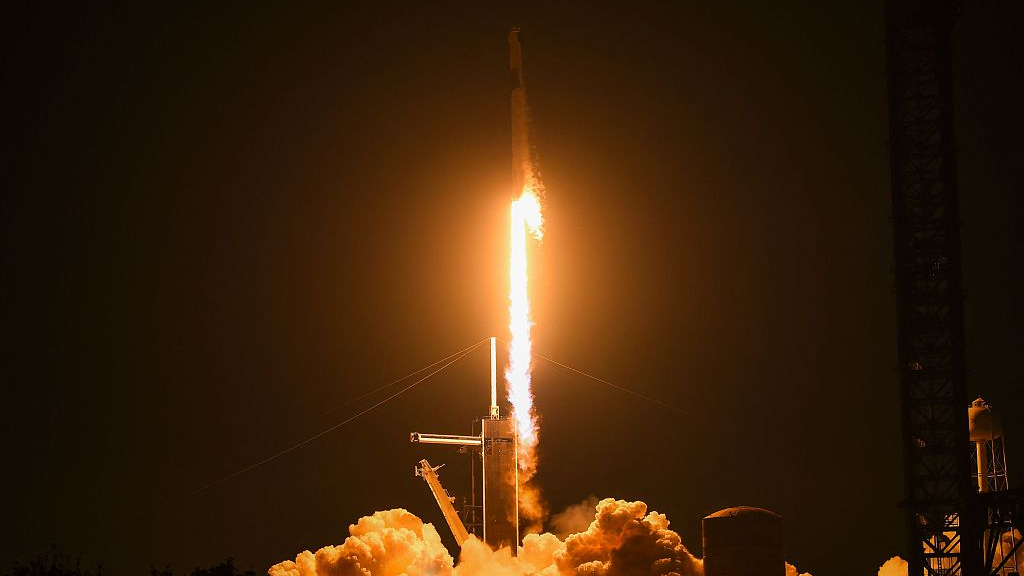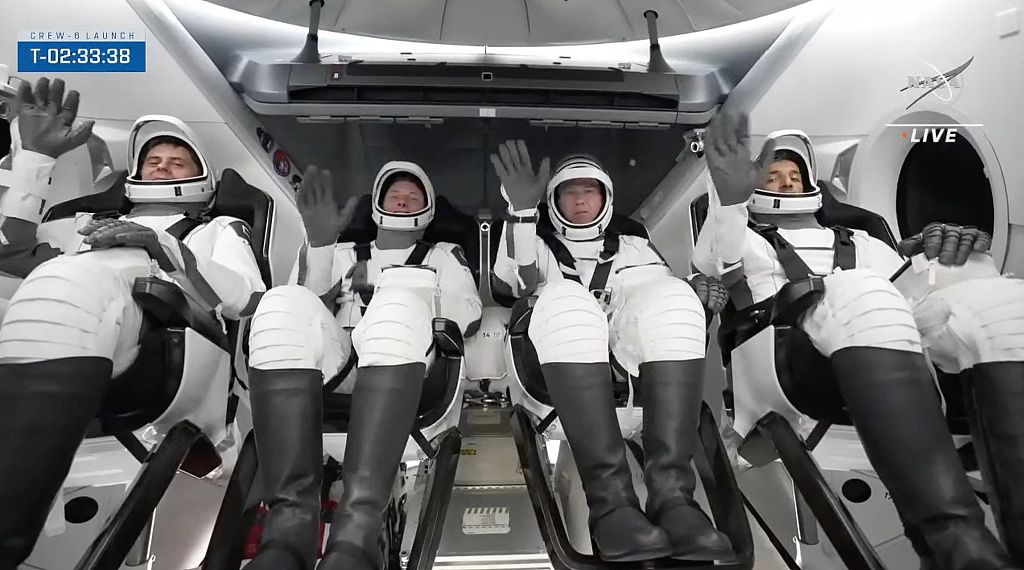
The SpaceX Falcon 9 rocket, with the company's Crew Dragon carrying the Crew-6 mission, launches from pad 39A at NASA's Kennedy Space Center in Cape Canaveral on March 2, 2023. /CFP
The SpaceX Falcon 9 rocket, with the company's Crew Dragon carrying the Crew-6 mission, launches from pad 39A at NASA's Kennedy Space Center in Cape Canaveral on March 2, 2023. /CFP
NASA and SpaceX launched the Crew-6 mission to the International Space Station (ISS) early Thursday.
The SpaceX Falcon 9 rocket and Dragon spacecraft Endurance roared off Launch Complex 39A at Kennedy Space Center in Florida at 12:34 a.m. Eastern Time (0534 GMT) on Thursday.
Shortly after the liftoff, SpaceX confirmed the main engine cutoff and stage separation.
The first stage of the Falcon 9 rocket landed on the "Just Read the Instructions" off the coast of Florida.
The Dragon spacecraft has separated from the second stage and headed to the ISS.
The mission is the sixth crew rotation flight of a Dragon spacecraft as part of NASA's Commercial Crew Program.

Members of the SpaceX Dragon Crew-6 mission, Mission Specialist Andrey Fedyaev of Roscosmos (L), Pilot Warren "Woody" Hoburg (2nd L), Commander Stephen Bowen (2nd R), and Mission Specialist Sultan Alneyadi of the United Arab Emirates wave from the inside of their spacecraft ahead of the liftoff, March 1, 2023. /Screenshot via CFP
Members of the SpaceX Dragon Crew-6 mission, Mission Specialist Andrey Fedyaev of Roscosmos (L), Pilot Warren "Woody" Hoburg (2nd L), Commander Stephen Bowen (2nd R), and Mission Specialist Sultan Alneyadi of the United Arab Emirates wave from the inside of their spacecraft ahead of the liftoff, March 1, 2023. /Screenshot via CFP
The Crew-6 launch carries NASA astronauts Stephen Bowen and Warren "Woody" Hoburg, as well as United Arab Emirates astronaut Sultan Alneyadi and Roscosmos cosmonaut Andrey Fedyaev, to the space station for a science expedition mission.
The launch was originally scheduled for Monday but was called off due to a ground systems issue.
After a thorough review of the data and ground system, both NASA and SpaceX teams identified a clogged filter on the ground as the cause.
SpaceX teams replaced the filter, purged the line of ignition fluid with nitrogen and verified the lines were clean and ready for the new launch attempt, according to NASA.
Source(s): Xinhua News Agency